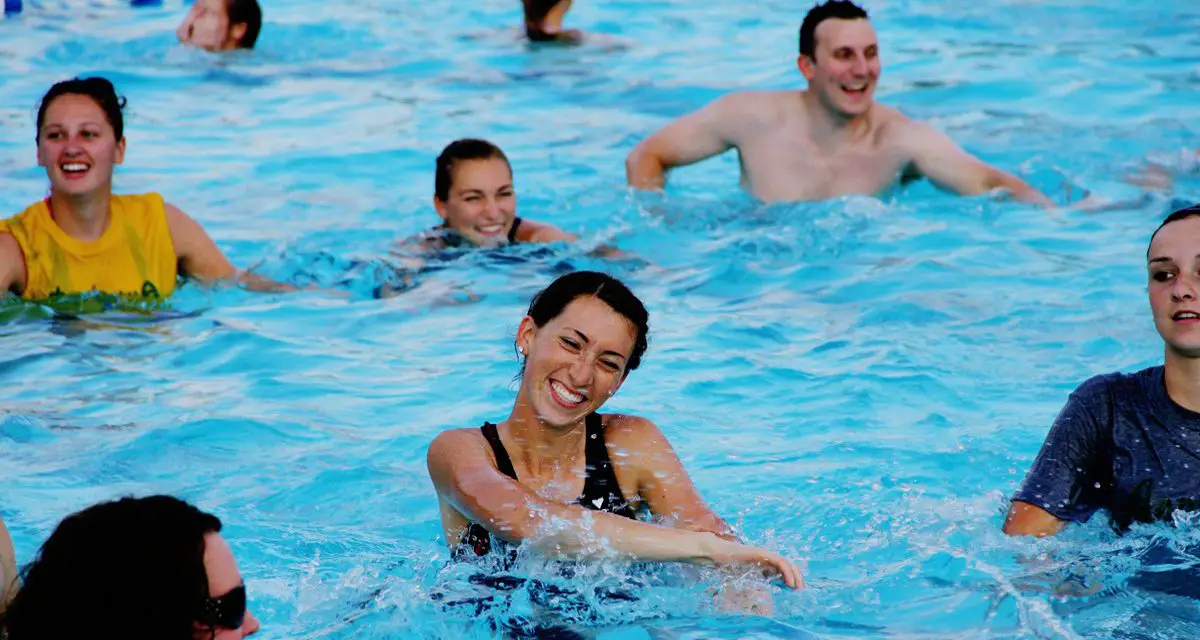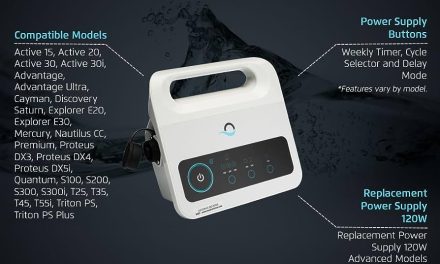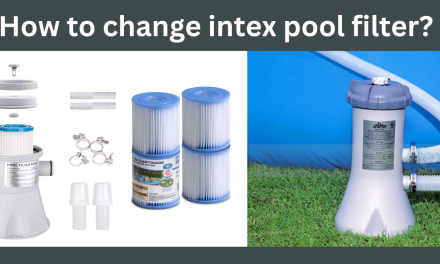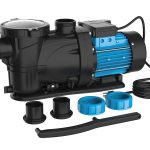Swimming builds the core, freestyle, and calf muscles. When you swim, these muscles are worked and strengthened, resulting in improved muscle tone and strength.
Swimming also targets specific muscle groups depending on the stroke used, with front crawl and backstroke targeting the gluteal muscles, hips, quads, and hamstrings, and breaststroke targeting the hamstrings, adductors, and abductors. Incorporating swimming into your fitness routine can effectively build and tone various muscle groups while providing a low-impact, full-body workout.
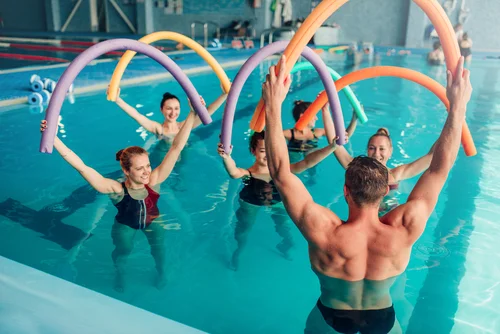
Credit: plungesandiego.com
The Power Of Aqua Fitness
Swimming is a fantastic way to build muscle throughout your entire body. It engages multiple muscle groups, including your core, arms, legs, back, and shoulders. Aqua fitness, which includes swimming as a workout option, offers numerous benefits. Not only does it provide a low-impact workout that is easy on the joints, but it also improves cardiovascular endurance and promotes overall strength and stamina.
When swimming, the resistance of the water challenges your muscles, helping to tone and build them over time. Additionally, swimming can be adapted to various intensity levels, from gentle laps to high-intensity interval training (HIIT), making it suitable for individuals of all fitness levels.
Whether you’re a beginner or an experienced swimmer, incorporating swimming into your fitness routine can have a significant impact on your muscle development and overall well-being.
Core Muscles
Engaging your core muscles while swimming is crucial for optimal performance and stability in the water. These muscles, including your abdominal muscles, play a vital role in maintaining proper body alignment and control during different swimming strokes. By actively engaging your core, you can improve your balance, power, and efficiency in the water.
Some exercises that can help strengthen your core through swimming include incorporating kick drills, using a kickboard, or practicing dolphin kicks. These exercises specifically target your abdominal muscles and help improve overall core strength. By incorporating these exercises into your swimming routine, you can develop stronger core muscles that will enhance your swimming abilities and performance in the water.
Freestyle Stroke
The freestyle stroke is an excellent swimming technique that engages multiple muscle groups. It primarily targets the core muscles, including the abdominals and lower back, for stability and rotation. Additionally, the freestyle stroke works the muscles in the arms, shoulders, and chest through the pulling and pushing movements.
The legs also play a role in kicking, engaging muscles such as the calves and thighs. To maximize the workout potential of the freestyle stroke, it’s essential to focus on proper technique. This ensures that the targeted muscles are fully utilized and that the swimmer avoids unnecessary strain or injury.
Incorporating interval training and drills can further enhance muscle development. Regularly practicing and progressively increasing the intensity and duration of swimming sessions will lead to noticeable gains in muscle strength and tone.
Calf Muscles
Swimming plays a significant role in conditioning and strengthening the calf muscles. By consistently engaging in swimming exercises, you can target and build your calf muscles effectively. The repetitive motion of kicking in swimming activates the calf muscles, helping them to become stronger and more defined.
Whether you swim freestyle, or breaststroke, or incorporate specific exercises for swimmers, such as flutter kicks, you are engaging your calf muscles. This consistent use of the calves during swimming can lead to muscle growth and increased strength in this area of the body.
So, if you want to build and tone your calf muscles, diving into the pool and incorporating swimming into your fitness routine is a great choice.
Additional Muscle Groups And Exercises
Swimming is an excellent exercise that builds and targets various muscle groups in the body. In addition to the commonly known muscle groups worked during swimming, such as the core, freestyle, and calf muscles, there are other muscle groups that can be developed through swimming.
One stroke that is particularly effective for muscle building is the breaststroke, which engages the muscles of the chest, shoulders, and triceps. Furthermore, incorporating resistance training exercises can enhance the muscle-building benefits of swimming. Exercises like pull-ups, lying triceps extensions, push-ups, arm circles, and weighted bench dips can specifically target and strengthen the muscles used in swimming.
By combining proper swimming techniques with these targeted exercises, swimmers can maximize their muscle development and overall fitness levels.
Frequently Asked Questions For What Muscles Does Swimming Build?
Can You Gain Muscle By Swimming?
Yes, swimming can help you gain muscle. Swimming engages multiple muscle groups in your body, including your core, arms, shoulders, back, and legs. It provides resistance against the water, which helps to build and strengthen these muscles over time. The repetitive movements and resistance of swimming can help increase muscle mass and improve muscle tone.
To see optimal results, aim for at least two to three swimming sessions per week, with each session lasting about 30 to 60 minutes. Gradually increase the intensity and duration of your swimming workouts to challenge your muscles and promote muscle growth.
Focus on maintaining proper technique and form to prevent overexertion or injury. Consistency and regularity in your swimming routine will be key to gaining muscle.
How Long Should I Swim To Gain Muscle?
To gain muscle through swimming, aim for at least two to three sessions per week, with each session lasting about 30 to 60 minutes. Start slowly and focus on proper technique and form to avoid overexertion or injury. Swimming engages multiple muscle groups, including your gluteal muscles, hips, quads, hamstrings, and adductors.
Front crawl and backstroke are particularly effective for working these muscles. Breaststroke also targets your hamstrings and the muscles on the inside and outside of your thighs, known as adductors and abductors respectively. By consistently swimming and gradually increasing your intensity and duration over time, you can effectively build muscle and improve your overall physical fitness.
Remember to listen to your body and consult with a professional if you have any concerns or pre-existing conditions.
What Muscles Does Swimming Build The Most?
Swimming builds several muscles in the body. The front crawl and backstroke primarily target the gluteal muscles, hips, quads, and hamstrings. Meanwhile, breaststroke focuses on the hamstrings, adductors, and abductors, which are the muscles on the inside and outside of the thighs.
Regular swimming sessions of about 30 to 60 minutes, two to three times per week, can help build muscle. It is important to start gradually and pay attention to proper technique and form to prevent overexertion and injury. By adhering to a consistent swimming routine, individuals can effectively strengthen and tone these muscle groups.
Conclusion
Swimming is a full-body workout that engages multiple muscle groups, helping you to build strength and improve your overall fitness. The primary muscles targeted during swimming are the core muscles, including the abdominals, lower back, and obliques, which are constantly engaged to maintain stability and balance in the water.
The upper body muscles, such as the shoulders, arms, and chest, are also heavily utilized during swimming strokes, providing resistance training that can help tone and sculpt these areas. Additionally, swimming engages the lower body muscles, including the glutes, hamstrings, quadriceps, and calves, as they work to propel you through the water.
Overall, swimming offers a low-impact, high-intensity workout that can help build lean muscle mass, improve cardiovascular endurance, and increase flexibility. Incorporating swimming into your fitness routine regularly can lead to a more balanced, strong, and toned physique. So, dive into the pool and start reaping the many benefits that swimming has to offer for muscle development and overall fitness.

